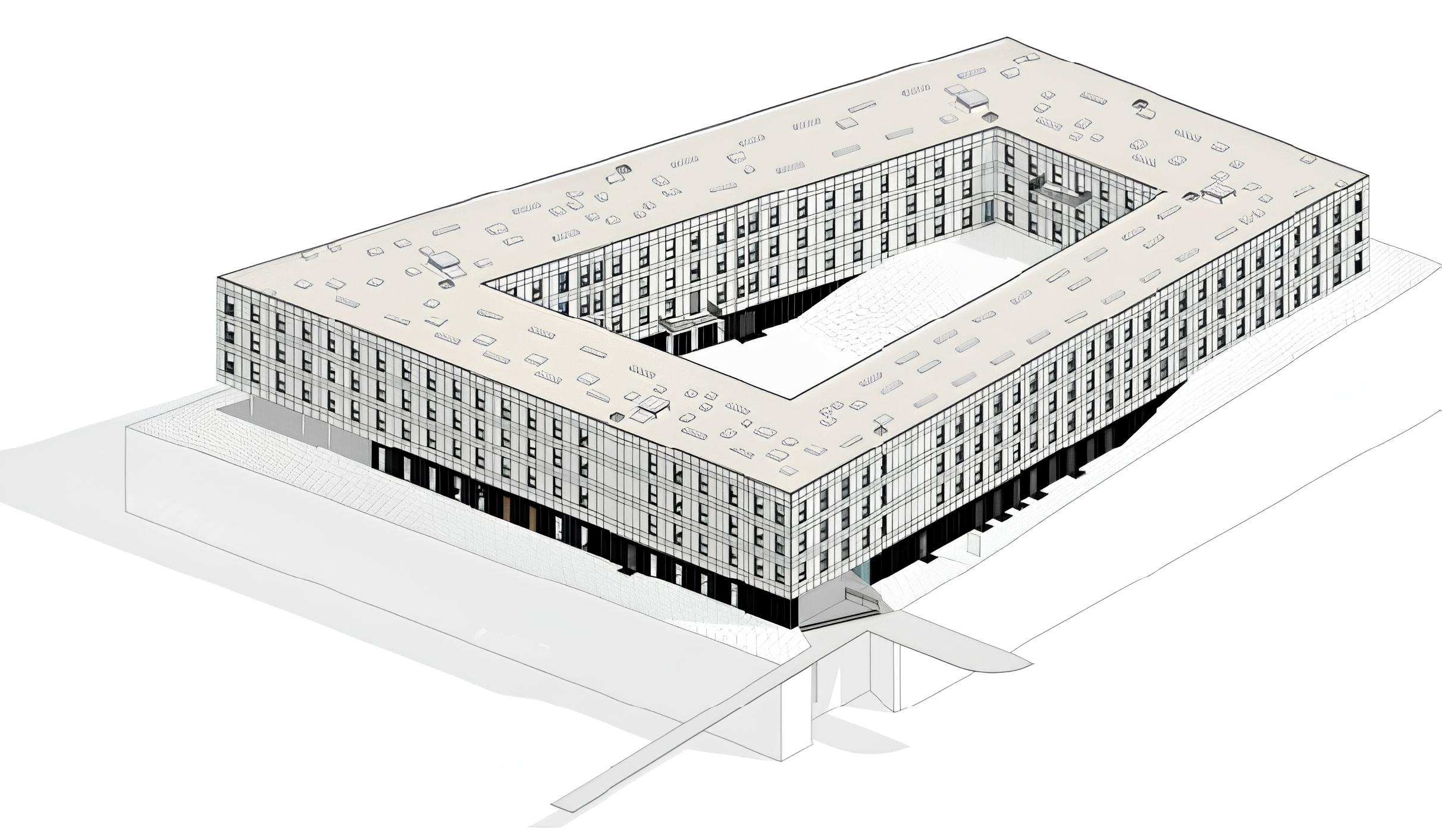The Casais Group has begun the installation of the structural elements of the CREE buildings in the Beja University Residence, to address the housing needs of the student community. Located next to the School of Technology and Management of the Polytechnic Institute of Beja, these student residences cover an area of around 11,000 square metres, with a cloister that serves as an inner courtyard and an open green area that houses the ground floor and three raised floors of the building.
The 17 million euro project, which is due to be completed next year, has a capacity for 503 students. It has 327 accommodation units, including 126 are single rooms, 150 are double rooms, 25 are single studios and 26 are double studios, many of which are adapted for students with special needs.
As well as living accommodation, and given the importance of having common spaces to promote integration and leisure, the Beja Residence will have social areas, study areas, common kitchens, dining areas, laundry, gym and technical areas.
The project is being developed using the CREE Buildings system – hybrid model that combines timber and concrete and is more sustainable than the traditional model – through industrialised construction. The Beja residence will be the second student residence developed by the Casais Group using this type of construction.
Industrialisation and off-site solutions have been at the heart of the Casais Group’s work. It has focused on innovation, technology and the digitalisation of processes applied to different types of projects, such as housing, residences and hotels, in order to simulate durability scenarios and compare costs. One of the key objectives is to develop a strong focus on the key performance indicators of buildings and their life cycle costs. The focus is on technology as a way of thinking about sustainability in the sector and to accelerate a green transition in the construction sector.
“We are very proud of the Beja Student Residence project. It’s the second public building project we have undertaken using industrialised construction, and it proves beyond doubt that this construction model can be used in all types of projects. Throughout this process, which is still ongoing, we have encountered some logistical challenges. However, since we’ve been working with the hybrid model for a few years now, the experience we’ve gained in other projects, such as the Valença Residence, has allowed us to overcome these challenges and learn for the next projects”, says António Carlos Rodrigues, CEO of the Casais Group.
The Casais Group believes that innovation and sustainability are the future of the industry. The Group has been working with CREE Buildings for over six years – three as a major shareholder – to support the green transition in construction. Using the CREE Buildings model, the Casais Group is implementing the hybrid construction model, combining timber and concrete. During this time, dozens of projects have been developed using the hybrid model, such as B&B hotels, student residences (Valença and Beja – still under construction), and co-working and office spaces such as MITH and The First, in Guimarães. The latter, an iconic building, has already won several awards, such as Best Private Project at the Construir Awards, demonstrating the excellent results of this solution.

